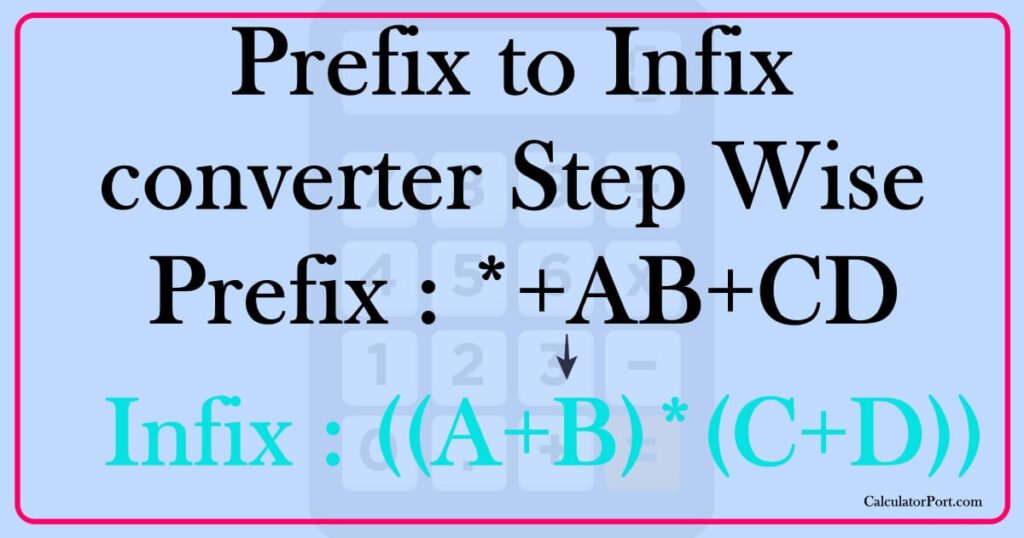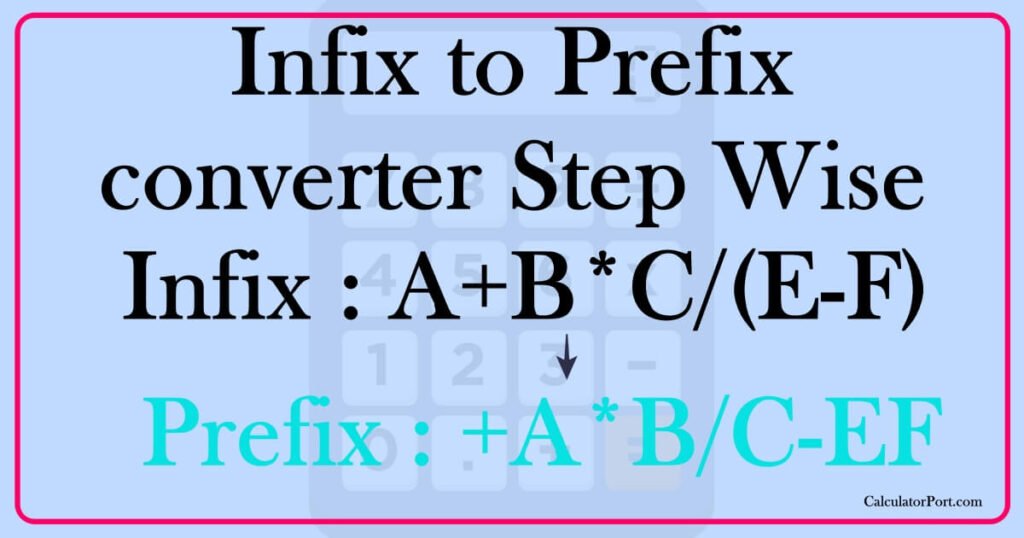Postfix to infix converter
Postfix:
Infix:
| Input String | Postfix Expression | Stack (Infix) |
|---|
A postfix expression is a type of arithmetic expression in which the operands (numbers) are written before the operator symbols. For example, the postfix expression “2 3 +” means “add 2 and 3.”
On the other hand, an infix expression is a type of arithmetic expression that is written using the standard notation for operators (e.g. “*” for multiplication, “+” for addition). The same expression “2 3 +” would be written as “2 + 3” in infix notation.
To convert a postfix expression to an infix expression, you can use the following steps:
- Create an empty stack
- Start scanning the postfix expression from left to right
- If the current character is an operand, push it onto the stack
- If the current character is an operator, pop two operands from the stack, put the operator between them, and push the result back onto the stack
- Repeat steps 2-4 until you have scanned the entire expression
- The result will be the top element on the stack, which is the infix expression


